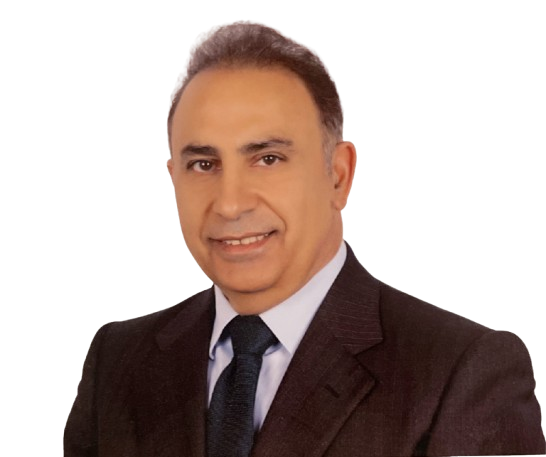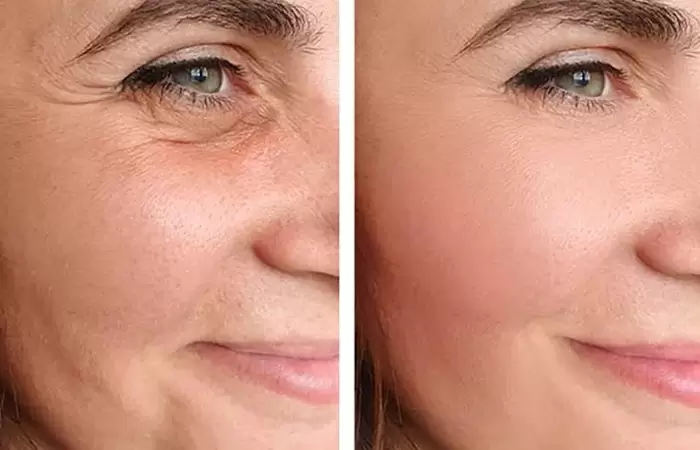Facelift Procedure

Facelift Procedure
Signs of aging affect both men and women as they age, with many people dreaming of maintaining a youthful appearance with a smooth face free of wrinkles and signs of aging. Cosmetic techniques have been one of the prominent solutions that help maintain a more youthful and radiant skin. So, what is a facelift procedure?
– Facelift Procedure: It is a procedure done to correct sagging, drooping skin, and wrinkles on the face and neck.
Why Might I Need a Facelift Procedure:
As we age, skin sagging occurs along with the appearance of folds and fatty tissues in the neck and face area. Many deep lines appear between the nose and mouth, making you look older and tired. Various factors such as poor diet, smoking, and genetic factors can accelerate these changes. Therefore, if you want to restore the youthful glow to your face, facelift procedures are the ideal solution.
What Happens During a Facelift Procedure:
During this procedure, the face and sagging skin are tightened either alone or through reshaping the nose, forehead lift, or eyelid surgery. The cosmetic surgeon will discuss with you all available options that suit the size and shape of your face, as well as the degree of sagging and wrinkles. The procedure is performed under general anesthesia or conscious sedation (a mixture of medications used by the doctor to help you relax and prevent pain while remaining awake during the procedure, allowing for faster recovery and quicker return to activity).
Regarding incisions, two incisions will be made: one above the hairline at the temples extending behind the earlobe downward to the scalp, and another incision under the chin. This, of course, depends on the surgical pattern and the type of lift the doctor wishes to perform.
During the procedure, the doctor will: remove and lift the muscles and fat under the skin, tighten some muscles, tighten the sagging skin, and suction fat from the neck.
Things to do before the procedure:
1- Consult a cosmetic surgeon: When deciding to undergo a procedure like a facelift, you should consult a cosmetic surgeon. During the consultation, you will undergo a physical examination, medical history review, and psychological evaluation. Do not hesitate to ask your doctor all questions to understand the surgical procedures, potential risks, and post-operative instructions.
2- In the week leading up to the surgery, the doctor may ask you to stop taking blood-thinning medications to reduce the risk of bleeding during the surgery. Ask your doctor about other medications you are taking that need to be stopped before the procedure.
3- On the day of the surgery: Stop eating and drinking at least 8 hours before the scheduled surgery time. If your doctor instructs you to take certain medications, they should be taken with a small sip of water.
4- Arrive at the hospital at the agreed-upon time.
Surgery risks:
Any surgery involves various risks such as bleeding, infection, and general anesthesia problems (such as breathing and heart issues). Other risks include:
1- Subcutaneous hematoma (accumulation of blood under the skin that may require surgical intervention for removal) or seroma.
2- Loss of sensation in the area and numbness.
3- Paralysis in facial muscles (muscles responsible for facial expressions) may be temporary or permanent.
4- Non-aesthetic scarring at the surgical site (rare).
Facial asymmetry.
5- Pigmentation changes and skin color alterations.
7- Irregular skin texture.
8- Skin irritation.
These risks are rare, and many people are happy after undergoing surgical facelift. You may experience swelling, bruising, skin color changes, pain, and numbness for 10-14 days after the procedure. The doctor will conceal the scars within the hairline or natural facial lines, and they will fade over time, so there is no need to worry about facial deformities due to scarring.
Instructions to follow after undergoing surgical facelift:
1- The doctor will place a small tube (drain) to remove fluids from under the skin to prevent accumulation. It is usually placed behind the ear and needs to be removed one or two days after surgery. Your head will be loosely wrapped with bandages to reduce bruising (usually removed after 1-5 days).
2- You can use painkillers prescribed by the doctor, and you should adhere to any other medications for optimal results. The doctor may ask you to stop taking blood-thinning medications for several days after surgery.
3- Elevate your head with two pillows when sleeping for two days after surgery.
4- Your face may take 4-6 weeks to return to its normal state, free from bruising, swelling, and pallor.
5- You will be asked to visit the doctor after 5 days to remove stitches.
6- Avoid smoking or exposure to secondhand smoke for several days after surgery.
7- Avoid heavy lifting or excessive bending after surgery.
8- Some people may experience numbness and tingling for a month or two after surgery, which is normal and not a cause for concern.
9- Use concealer makeup cautiously.
10- Stay away from strenuous activities and intense sports (such as boxing) for several days after the procedure.

Dr. Dima AL BATAL

Batool Al Naser

Dr. Hassan Alghawi

Dr. Ashraf Nouman

Dr. Patrick Azir

Dr. Alaa Hishmeh

Dr. América Escandón

Dr. Ismail Madookh

Dr. Wahb Ziyoud

Dr. Rana Malouk

Dr. Aiham Matanes

Dr Mansour Masoumi

Dr. Ahmed El-Sawy

Dr. Habib Dezhagah

Dr. Noha Haider

Ahed sarraj

Dr. Radwan Sallam

Dr. Amina Al-Asali

Dr. Molham Hassoun

Dr.osama almoree

Dr. Amira Abdelrahim Elgak Hassan

Dr. Nadin Merza

Dr. Mira Hamed

Dr. Sami George

Dr. Hayat Muin Ismail

Dr. Majda Mohamed Khair Abdo

Dr. Mohamed Helmi Hussine

Dr. Ossama Mesbah Zaher

Dr. Ammar AL Farhan

Dr. Nidal Habbak

Dr. Rachid Al-Kudsi Sabbagh

Dr. Ahmad Qara Ali

Dr. Abdul Jabbar Al Sobh

Dr.Mais Zarzar

Dr. Yara Alhasibi

Dr. Fadi Nageeb

Dr. Assef Ahmad




